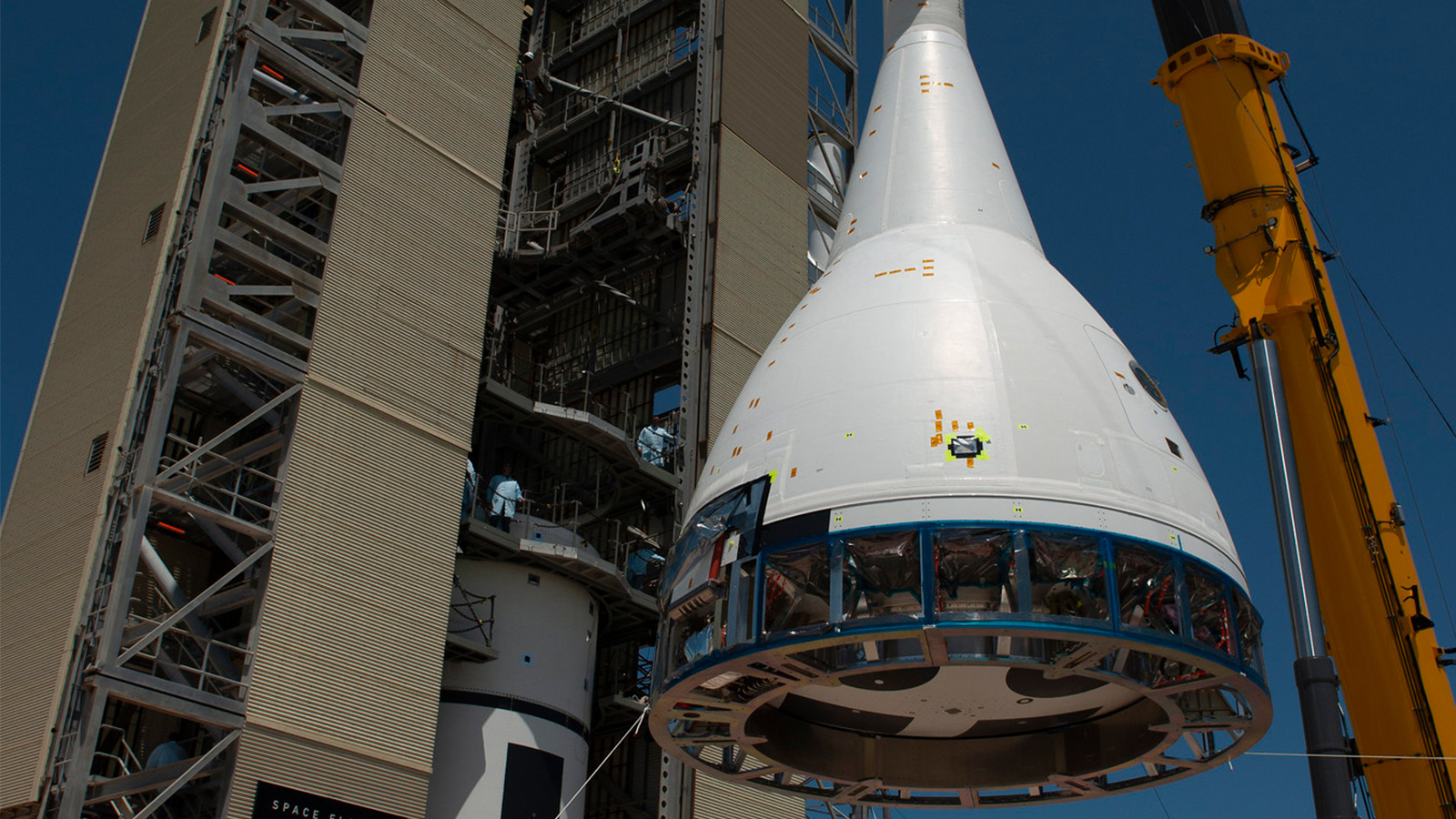Stay Up to Date
Submit your email address to receive the latest industry and Aerospace America news.
The stakes are enormous for NASA and Lockheed Martin going into Tuesday’s test of the motors and flight software that would boost an Orion capsule and crew away from a fizzling or exploding launch vehicle.
This launch abort system, or LAS for short, is a “key safety feature” of Orion, program manager Mark Kirasich said during a Monday press conference, according to a livestream of the event. NASA can’t launch astronauts to the moon in 2024 until LAS is proven.
“It’s clearly a crucial test,” Rick Ambrose, head of space at Lockheed Martin, the prime contractor for Orion, told me at the Paris Air Show last month. “We had a successful first test so I’m very confident it will go well, but that’s why we test things.”
This test of the stack of three motors and aeroshell will be more ambitious than the test in 2010, when the abort motor in the LAS lifted a test capsule about 2 kilometers off the launch pad and then separated from the crew module, which parachuted to safety.
This time, a refurbished single-stage rocket motor from a U.S. Air Force Peacekeeper missile will shoot a 10,000-kilogram Orion test capsule about 9,500 meters above Cape Canaveral Air Force Base in Florida. Fifty-five seconds after launch, the capsule’s flight computer will trigger the LAS, which will fire its three motors in sequence. First, an abort motor producing about 180 kg of thrust will propel the capsule away from the booster. Then an attitude control motor will rotate the capsule into place for separation, and a jettison motor will separate it from the LAS.
Unlike the real Orion crew capsule, which uses a parachute system for landing, this craft will splash down in the Atlantic Ocean without one. Kirasich said this was done “in order to perform this test as early as possible.”
“We want to get the data; we want to inform the missions going forward,” he said.
NASA won’t recover the test vehicle, instead relying on 890 sensors inside the craft for data on LAS’ performance. That information will be sent to ground sites in Cape Canaveral during the test, as well as recorded on 12 onboard data recorders, which will eject from the craft before it reaches the water.
“Our communications system end to end will get us all the data we need,” said Jenny Devolites, conductor for tomorrow’s test. “The data recorders are really a backup system.”
NASA is broadcasting the launch, dubbed Ascent Abort-2, on NASA TV and the agency’s website, with coverage set to begin at 6:40 a.m. Eastern time. The four-hour launch window opens at 7 a.m., and the test will last approximately three minutes.
During the uncrewed and crewed test flights leading up to 2024, Orion will sit atop the Space Launch System, or SLS, rocket that Boeing is developing for NASA.
When asked how a negative test result would affect the planned 2024 landing, Ambrose said, “I don’t want to speculate on that because it’s going to go well.”
About cat hofacker
Cat helps guide our coverage and keeps production of the print magazine on schedule. She became associate editor in 2021 after two years as our staff reporter. Cat joined us in 2019 after covering the 2018 congressional midterm elections as an intern for USA Today.
Related Posts
Stay Up to Date
Submit your email address to receive the latest industry and Aerospace America news.




